Various Works Read online
Page 61
that too when he saw their teeth were white. The reason of the
whiteness of semen is that it is a foam, and foam is white, especially
that which is composed of the smallest parts, small in the sense
that each bubble is invisible, which is what happens when water and
oil are mixed and shaken together, as said before. (Even the ancients
seem to have noticed that semen is of the nature of foam; at least
it was from this they named the goddess who presides over union.)
This then is the explanation of the problem proposed, and it is
plain too that this is why semen does not freeze; for air will not
freeze.
3
The next question to raise and to answer is this. If, in the case of
those animals which emit semen into the female, that which enters
makes no part of the resulting embryo, where is the material part of
it diverted if (as we have seen) it acts by means of the power
residing in it? It is not only necessary to decide whether what is
forming in the female receives anything material, or not, from that
which has entered her, but also concerning the soul in virtue of which
an animal is so called (and this is in virtue of the sensitive part
of the soul)- does this exist originally in the semen and in the
unfertilized embryo or not, and if it does whence does it come? For
nobody would put down the unfertilized embryo as soulless or in
every sense bereft of life (since both the semen and the embryo of an
animal have every bit as much life as a plant), and it is
productive up to a certain point. That then they possess the nutritive
soul is plain (and plain is it from the discussions elsewhere about
soul why this soul must be acquired first). As they develop they also
acquire the sensitive soul in virtue of which an animal is an
animal. For e.g. an animal does not become at the same time an
animal and a man or a horse or any other particular animal. For the
end is developed last, and the peculiar character of the species is
the end of the generation in each individual. Hence arises a
question of the greatest difficulty, which we must strive to solve
to the best of our ability and as far as possible. When and how and
whence is a share in reason acquired by those animals that participate
in this principle? It is plain that the semen and the unfertilized
embryo, while still separate from each other, must be assumed to
have the nutritive soul potentially, but not actually, except that
(like those unfertilized embryos that are separated from the mother)
it absorbs nourishment and performs the function of the nutritive
soul. For at first all such embryos seem to live the life of a
plant. And it is clear that we must be guided by this in speaking of
the sensitive and the rational soul. For all three kinds of soul,
not only the nutritive, must be possessed potentially before they
are possessed in actuality. And it is necessary either (1) that they
should all come into being in the embryo without existing previously
outside it, or (2) that they should all exist previously, or (3), that
some should so exist and others not. Again, it is necessary that
they should either (1) come into being in the material supplied by the
female without entering with the semen of the male, or (2) come from
the male and be imparted to the material in the female. If the latter,
then either all of them, or none, or some must come into being in
the male from outside.
Now that it is impossible for them all to preexist is clear from
this consideration. Plainly those principles whose activity is
bodily cannot exist without a body, e.g. walking cannot exist
without feet. For the same reason also they cannot enter from outside.
For neither is it possible for them to enter by themselves, being
inseparable from a body, nor yet in a body, for the semen is only a
secretion of the nutriment in process of change. It remains, then, for
the reason alone so to enter and alone to be divine, for no bodily
activity has any connexion with the activity of reason.
Now it is true that the faculty of all kinds of soul seems to have a
connexion with a matter different from and more divine than the
so-called elements; but as one soul differs from another in honour and
dishonour, so differs also the nature of the corresponding matter. All
have in their semen that which causes it to be productive; I mean what
is called vital heat. This is not fire nor any such force, but it is
the spiritus included in the semen and the foam-like, and the
natural principle in the spiritus, being analogous to the element of
the stars. Hence, whereas fire generates no animal and we do not
find any living thing forming in either solids or liquids under the
influence of fire, the heat of the sun and that of animals does
generate them. Not only is this true of the heat that works through
the semen, but whatever other residuum of the animal nature there
may be, this also has still a vital principle in it. From such
considerations it is clear that the heat in animals neither is fire
nor derives its origin from fire.
Let us return to the material of the semen, in and with which
comes away from the male the spiritus conveying the principle of soul.
Of this principle there are two kinds; the one is not connected with
matter, and belongs to those animals in which is included something
divine (to wit, what is called the reason), while the other is
inseparable from matter. This material of the semen dissolves and
evaporates because it has a liquid and watery nature. Therefore we
ought not to expect it always to come out again from the female or
to form any part of the embryo that has taken shape from it; the
case resembles that of the fig-juice which curdles milk, for this
too changes without becoming any part of the curdling masses.
It has been settled, then, in what sense the embryo and the semen
have soul, and in what sense they have not; they have it potentially
but not actually.
Now semen is a secretion and is moved with the same movement as that
in virtue of which the body increases (this increase being due to
subdivision of the nutriment in its last stage). When it has
entered the uterus it puts into form the corresponding secretion of
the female and moves it with the same movement wherewith it is moved
itself. For the female's contribution also is a secretion, and has all
the arts in it potentially though none of them actually; it has in
it potentially even those parts which differentiate the female from
the male, for just as the young of mutilated parents are sometimes
born mutilated and sometimes not, so also the young born of a female
are sometimes female and sometimes male instead. For the female is, as
it were, a mutilated male, and the catamenia are semen, only not pure;
for there is only one thing they have not in them, the principle of
soul. For this reason, whenever a wind-egg is produced by any
animal, the egg so forming has in it the parts of both sexes
potentially, but has not the principle in question, so that it
does
not develop into a living creature, for this is introduced by the
semen of the male. When such a principle has ben imparted to the
secretion of the female it becomes an embryo.
Liquid but corporeal substances become surrounded by some kind of
covering on heating, like the solid scum which forms on boiled foods
when cooling. All bodies are held together by the glutinous; this
quality, as the embryo develops and increases in size, is acquired
by the sinewy substance, which holds together the parts of animals,
being actual sinew in some and its analogue in others. To the same
class belong also skin, blood-vessels, membranes, and the like, for
these differ in being more or less glutinous and generally in excess
and deficiency.
4
In those animals whose nature is comparatively imperfect, when a
perfect embryo (which, however, is not yet a perfect animal) has
been formed, it is cast out from the mother, for reasons previously
stated. An embryo is then complete when it is either male or female,
in the case of those animals who possess this distinction, for some
(i.e. all those which are not themselves produced from a male or
female parent nor from a union of the two) produce an offspring which
is neither male nor female. Of the generation of these we shall
speak later.
The perfect animals, those internally viviparous, keep the
developing embryo within themselves and in close connexion until
they give birth to a complete animal and bring it to light.
A third class is externally viviparous but first internally
oviparous; they develop the egg into a perfect condition, and then
in some cases the egg is set free as with creatures externally
oviparous, and the animal is produced from the egg within the mother's
body; in other cases, when the nutriment from the egg is consumed,
development is completed by connection with the uterus, and
therefore the egg is not set free from the uterus. This character
marks the cartilaginous fish, of which we must speak later by
themselves.
Here we must make our first start from the first class; these are
the perfect or viviparous animals, and of these the first is man.
Now the secretion of the semen takes place in all of them just as does
that of any other residual matter. For each is conveyed to its
proper place without any force from the breath or compulsion of any
other cause, as some assert, saying that the generative parts
attract the semen like cupping-glasses, aided by the force of the
breath, as if it were possible for either this secretion or the
residue of the solid and liquid nutriment to go anywhere else than
they do without the exertion of such a force. Their reason is that the
discharge of both is attended by holding the breath, but this is a
common feature of all cases when it is necessary to move anything,
because strength arises through holding the breath. Why, even
without this force the secretions or excretions are discharged in
sleep if the parts concerned are full of them and are relaxed. One
might as well say that it is by the breath that the seeds of plants
are always segregated to the places where they are wont to bear fruit.
No, the real cause, as has been stated already, is that there are
special parts for receiving all the secretions, alike the useless (as
the residues of the liquid and solid nutriment), and the blood, which
has the so-called blood-vessels.
To consider now the region of the uterus in the female- the two
blood-vessels, the great vessel and the aorta, divide higher up, and
many fine vessels from them terminate in the uterus. These become
over-filled from the nourishment they convey, nor is the female nature
able to concoct it, because it is colder than man's; so the blood is
excreted through very fine vessels into the uterus, these being unable
on account of their narrowness to receive the excessive quantity,
and the result is a sort of haemorrhage. The period is not
accurately defined in women, but tends to return during the waning
of the moon. This we should expect, for the bodies of animals are
colder when the environment happens to become so, and the time of
change from one month to another is cold because of the absence of the
moon, whence also it results that this time is stormier than the
middle of the month. When then the residue of the nourishment has
changed into blood, the catamenia tend to occur at the above-mentioned
period, but when it is not concocted a little matter at a time is
always coming away, and this is why 'whites' appear in females while
still small, in fact mere children. If both these discharges of the
secretions are moderate, the body remains in good health, for they act
as a purification of the secretions which are the causes of a morbid
state of body; if they do not occur at all or if they are excessive,
they are injurious, either causing illness or pulling down the
patient; hence whites, if continuous and excessive, prevent girls from
growing. This secretion then is necessarily discharged by females
for the reasons given; for, the female nature being unable to
concoct the nourishment thoroughly, there must not only be left a
residue of the useless nutriment, but also there must be a residue
in the blood-vessels, and this filling the channels of the finest
vessels must overflow. Then Nature, aiming at the best end, uses it up
in this place for the sake of generation, that another creature may
come into being of the same kind as the former was going to be, for
the menstrual blood is already potentially such as the body from which
it is discharged.
In all females, then, there must necessarily be such a secretion,
more indeed in those that have blood and of these most of all in
man, but in the others also some matter must be collected in the
uterine region. The reason why there is more in those that have
blood and most in man has been already given, but why, if all
females have such a secretion, have not all males one to correspond?
For some of them do not emit semen but, just as those which do emit it
fashion by the movement in the semen the mass forming from the
material supplied by the female, so do the animals in question bring
the same to pass and exert the same formative power by the movement
within themselves in that part from whence the semen is secreted. This
is the region about the diaphragm in all those animals which have one,
for the heart or its analogue is the first principle of a natural
body, while the lower part is a mere addition for the sake of it.
Now the reason why it is not all males that have a generative
secretion, while all females do, is that the animal is a body with
Soul or life; the female always provides the material, the male that
which fashions it, for this is the power that we say they each
possess, and this is what is meant by calling them male and female.
Thus while it is necessary for the female to provide a body and a
material mass, it is not necessary for the male, bec
ause it is not
within the work of art or the embryo that the tools or the maker
must exist. While the body is from the female, it is the soul that
is from the male, for the soul is the reality of a particular body.
For this reason if animals of a different kind are crossed (and
this is possible when the periods of gestation are equal and
conception takes place nearly at the same season and there is no great
difference in the of the animals), the first cross has a common
resemblance to both parents, as the hybrid between fox and dog,
partridge and domestic fowl, but as time goes on and one generation
springs from another, the final result resembles the female in form,
just as foreign seeds produce plants varying in accordance with the
country in which they are sown. For it is the soil that gives to the
seeds the material and the body of the plant. And hence the part of
the female which receives the semen is not a mere passage, but the
uterus has a considerable width, whereas the males that emit semen
have only passages for this purpose, and these are bloodless.
Each of the secretions becomes such at the moment when it is in
its proper place; before that there is nothing of the sort unless with
much violence and contrary to nature.
We have thus stated the reason for which the generative secretions
are formed in animals. But when the semen from the male (in those
animals which emit semen) has entered, it puts into form the purest
part of the female secretion (for the greater part of the catamenia
also is useless and fluid, as is the most fluid part of the male
secretion, i.e. in a single emission, the earlier discharge being in
most cases apt to be infertile rather than the later, having less
vital heat through want of concoction, whereas that which is concocted
is thick and of a more material nature).
If there is no external discharge, either in women or other animals,
on account of there not being much useless and superfluous matter in
the secretion, then the quantity forming within the female
altogether is as much as what is retained within those animals which

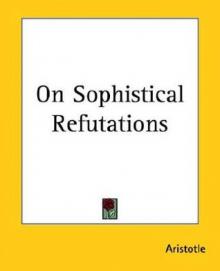 On Sophistical Refutations
On Sophistical Refutations The Categories
The Categories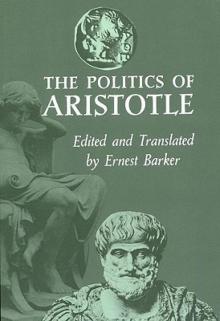 The Politics of Aristotle
The Politics of Aristotle Nicomachean Ethics
Nicomachean Ethics The Rhetoric & the Poetics of Aristotle
The Rhetoric & the Poetics of Aristotle POSTERIOR ANALYTICS
POSTERIOR ANALYTICS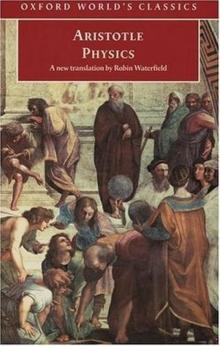 Physics
Physics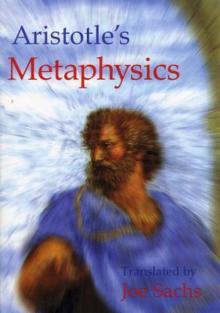 Metaphysics
Metaphysics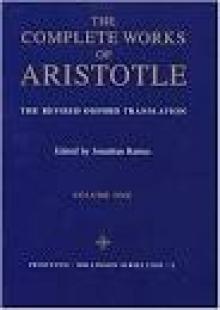 Various Works
Various Works